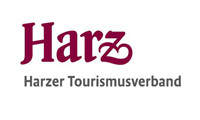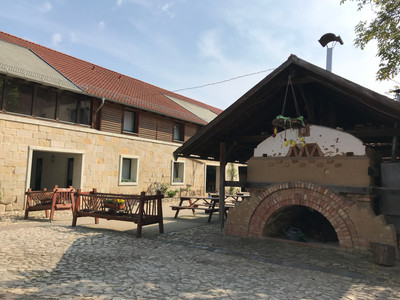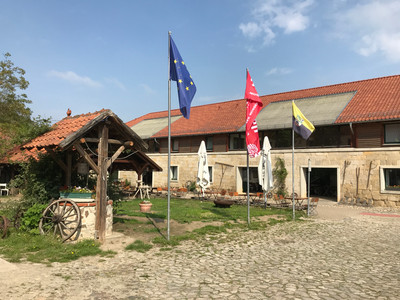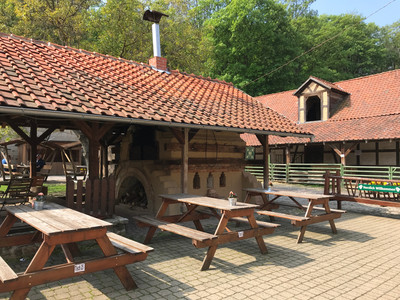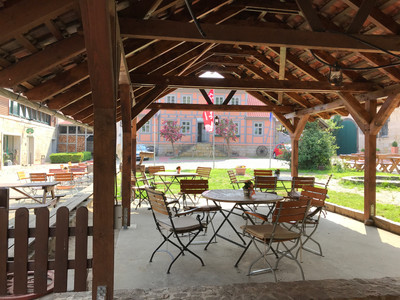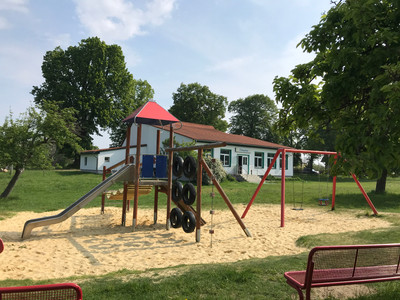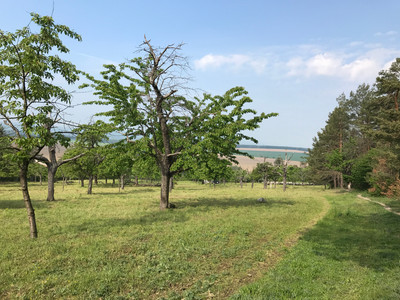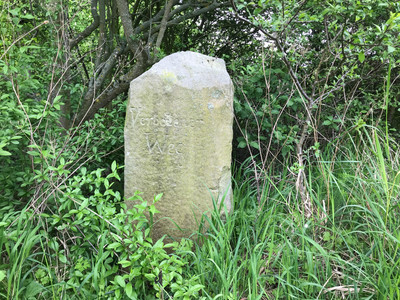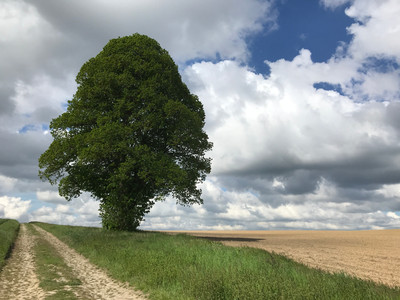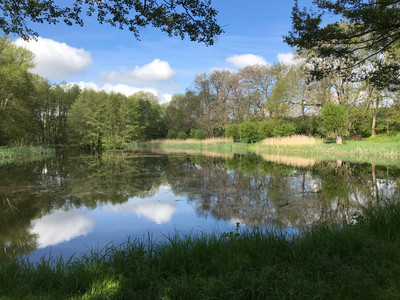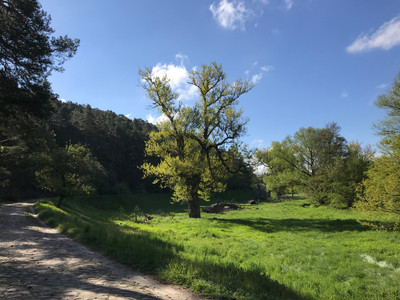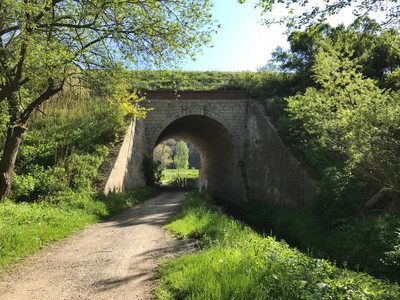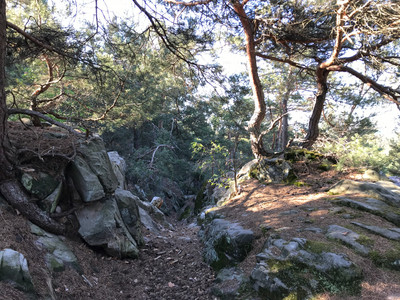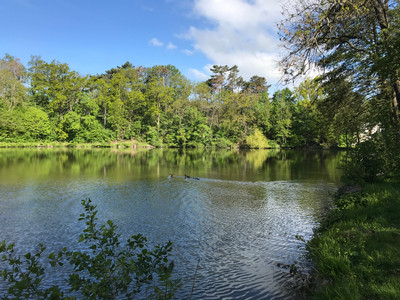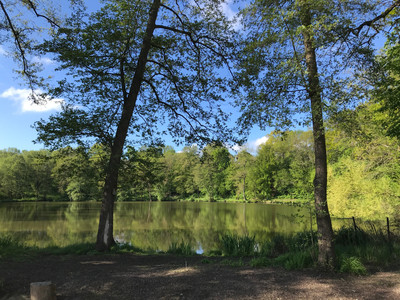There is a lot to see on this route: Schäferhof Schützenplatz Kirschwiese Forbidden Path Breakfast Linden Tree Brockenstedt Mill Goldbach and Goldbach Meadows Natural Monument Echo Bridge Donkey Trail Oil Mill Pond
Here is what there is to discover:
- Schäferhof
Old manor from the Thuringian period (5th century). Later used as a shepherd's farm. Stones from Altenburg were probably used for construction. Extensively restored after 1990. - Schützenplatz
The marksmen’s house stands on the meadow orchard. The Langenstein marksmen’s club was founded in 1817. Originally shooting was done from the window of the marksmen’s house at the concrete base. - Kirschwiese
The large orchard was later partially planted with pines. The Siemens stone is located on the northwest side. - Forbidden Path
South of Langenstein ran the border between the Duchy of Braunschweig and the Kingdom of Prussia. Since there was no customs house on this path, it was not allowed to be used by everyone. - Breakfast Linden Tree
The individual trees in the landscape marked the shepherd’s territories. They were gladly used by farm workers as shade for taking their snack breaks. - Brockenstedt Mill
Here was the village of Brockenstedt. After the village was abandoned, only the mill remained. Milling rights were something special and not easily relinquished. The last owner left the mill in 1970; it was subsequently demolished. - Goldbach and Goldbach Meadows Natural Monument
The Goldbach hosts rare fish and crayfish species. Kingfisher, dipper and water thrush breed here. Remarkable are the very old and extensive black poplars in the lower part. - Echo Bridge
The Echo Bridge is the most important structure of the Halberstadt - Blankenburg railway. The line was opened as a private railway in 1873. The bridge allows passage for the Goldbach. - Donkey Trail
An ascent to Altenburg. Since the castle had no well, water had to be brought up the hill with donkeys. - Oil Mill Pond
It served as a water reservoir for the oil mill located on the other side of the street. The water wheel was later replaced by an electric drive. Milling operations ceased in 1965.
